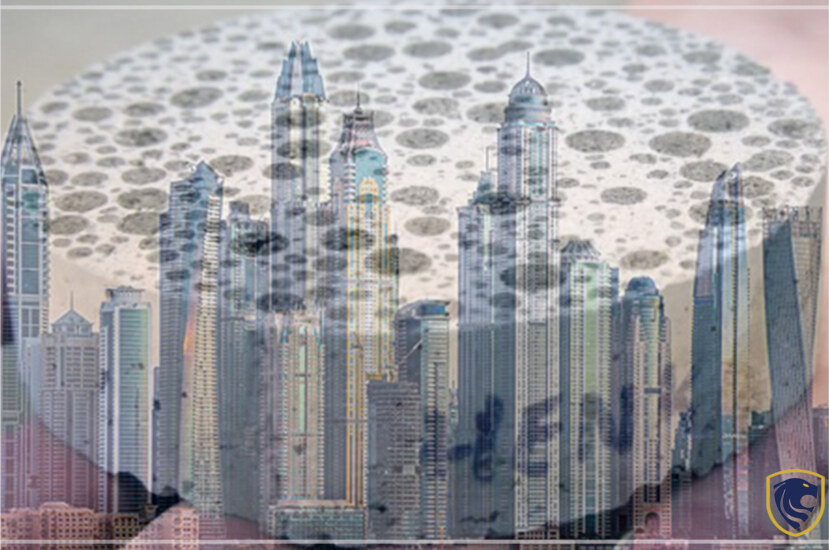The world has constantly been looking for better ways to build structures and bridges. Self-Healing concrete is a new invention that could change the future of engineering forever. Put this on your pavement, sidewalk, or parking lot, and it will heal itself before you know it! These buildings are not just trending now; many believe these new inventions will be necessary by 2030 as the world population grows exponentially.
The world’s growing population and expanding cities have put pressure on the construction industry. More bridges, buildings, roads, and parking lots have been needed to keep up with demand. Concrete is the most abundant material in the world. And is widely used in most new structures. Although it is widely used, concrete has many issues, including cracks that let water into the foundation of buildings.
The innovative concrete
The world has been searching for a solution, and a new invention may be the answer: Self-healing concrete! This innovative concrete can heal itself from cracks and leaks, which can cause more damage to the surrounding structure over time if left untreated. Self-healing concrete is a third-generation material and can be applied to almost any type of concrete. It is just as strong as regular concrete, but it has the ability to heal itself from cracks and leaks.
The Self-healing concrete is eco-friendly, maintains stability in various climates, reduces the number of maintenance projects, increases lifespan, and saves money on repairs. The cost for self-healing concrete is higher than traditional forms of construction; however, it also has a longer lifespan, making up for the initial cost.
Self-healing concrete uses a nanotechnology coating that can detect and fill in any cracks or leaks in the concrete. They are able to withstand scuffs, scratches, and small cracks. The self-healing concrete keeps water from getting into the foundation of buildings which may otherwise cause more structural damage in the future. Researchers believe this invention could save thousands of lives if used on sidewalks, highways, and bridges around the world.
The self-healing concrete was invented by Professor Jongyoon Han, who is currently working at Pohang University of Science and Technology (POSTECH) as a professor of civil engineering. Professor Han’s work has led to several inventions, and his first was the world’s first self-healing asphalt that can repair itself from scratches.
How it can change civil engineering industry
Self-Healing Concrete is a new technology that has tremendous possibilities for the future of civil engineering. This idea has many critics and supporters at this time; however, it will only be a matter of time before we see how self-healing concrete can better our society for years to come.
Self-healing concrete is just one of the many new inventions that will be needed to improve society in the future. Many researchers believe that these new technologies will be necessary to keep up with the growing world population and enormous infrastructure required by those living in larger cities.

The world has been using concrete for thousands of years; this new invention may be just what we need as the population continues to grow. Although there are critics of this idea, many researchers think that self-healing concrete will be used in most future buildings.
Researchers predict that using self-healing concrete will be necessary by 2030 due to the exponential population growth. It is believed that more buildings and infrastructure will be needed over time. This invention will help sustain current structures while saving costs when it comes to repairs and maintenance. Simply put, self-healing concrete is a huge step towards making better cities worldwide.
Why is this so revolutionary?
Self-healing concrete not only works on buildings and sidewalks, but it also has the ability to repair itself! This invention’s benefits far exceed an ordinary concrete sidewalk. Self-healing concrete allows you to repair cracks and leaks in your foundation that would otherwise cause more damage and risk in the future.
The real question is, why haven’t we already seen this invention work?
Many researchers and engineers have been working for years on many different ways of curing cement like this but without success. This new technology makes use of a unique nanotechnology coating, which will provide solutions for many issues associated with current construction.
Self-healing concrete is much stronger than traditional concrete. Unlike other technology, this new invention does not compromise strength for healing. The secret to the self-healing process is a nano-scale coating, which includes titanium dioxide (TiO2), an active ingredient found in many food additives and toothpaste. This nanotechnology helps the concrete to repair itself by focusing light onto the affected area and heating it up to 650 degrees Celsius. The heat and light then trigger a chemical reaction that self-seals the cracks within 15 minutes!
The inventor behind this technology is Jongyoon Han, a civil engineering professor at Pohang University of Science and Technology (POSTECH) in South Korea. Professor Han is leading the development of self-healing concrete on a global level. This invention is being funded by the Korean Ministry of Trade, Industry, and Energy and Daelim Industrial, one of South Korea’s leading steel and cement producers. The self-healing concrete will be used for bridges, roads, and sidewalks.
benefits self-healing concrete
A self-healing concrete has many benefits over traditional forms of construction. The cost to build using this new technology is higher than the standard form of construction. However, it also has a longer lifespan, making up for the initial cost.

Many researchers are excited about this technology’s possibilities in terms of future infrastructure needs in cities worldwide. This invention can reduce the number of maintenance projects that are required to build and repair infrastructure, meaning a big saving for cities.
The self-healing concrete is eco-friendly as well. The secret ingredient in this new material is titanium dioxide (TiO2), a material found in many food dyes and additives. Cement production generates immense amounts of carbon dioxide and other gases. So this technology is an eco-friendly alternative. Because it only uses the TiO2 found in the atmosphere. Another benefit of self-healing concrete is that it maintains stability in various climates. Unlike other materials requiring specific conditions to function correctly.
The process of making self-healing concrete is not very difficult, but it does have many steps. The first step is to create a new mixture with the required proportions for making concrete. This mixture requires the addition of nano-sized glass particles and titanium dioxide (TiO2). The next step would be to spread the material on the desired area as you would regular concrete. After an hour of drying, the top layer of material needs to be removed for light to reach the TiO2 particles below. The final step would be to shine a light onto this area which helps the material repair itself in minutes.
The Cost
The self-healing concrete is an incredible new invention that will revolutionize the way we build structures in the future. The cost of creating this brand new concrete is higher than traditional kinds of concrete. However, it has a longer lifespan which makes up for it.
Many researchers and engineers are excited about the possibility of this new technology. Because it will have many benefits that could be applicable to other industries as well. The self-healing process currently takes 15 minutes. But little is known about how difficult it may be to scale up in order to make it more efficient. This new technology could be a game changer for the future of concrete construction.




